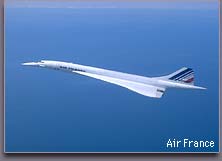 |
 |
In 1939, just one week before Adolf Hitler invaded Europe, a new German jet aircraft, the Heinkel 178, had a successful test flight. But it wasn't until almost the end of the war that the jet was used in battle, because Hitler had never paid attention to it and wasn't aware of its potential. By the time the jet was used in the war, it was too late to do Germany any good.
In 1952, Britain's DeHaviland introduced a jet-powered transport aircraft, the Comet I. This new plane had a pressurized cabin, and was able to fly in the stratosphere, giving it greater speed and a longer range than conventional planes. The Comet I held out the promise of comfortable air travel for passengers. Unfortunately, it exploded in mid-air three times in 1953-54. It turned out Comet I was highly susceptible to fatigue failure of the fuselage due to cyclic pressurization.
While DeHaviland was trying to diagnose this problem and looking for a countermeasure, Boeing introduced the B-707, and airplane production shifted almost entirely to the United States. Despite the failure of the Comet I, the development of the jet engine played an important role for reducing accidents. The jet engine is inherently safer than the propeller, because it consists of a rotating mechanism that is relatively free from machine trouble. The conventional propeller engine, which harnesses the movement of pistons to rotate the propeller, is far less stable.
The culmination of the rapid development of airplanes was the supersonic passenger jet. The Concorde had 40,000 times the flight range and 150 times the speed of the Wright Brothers' Flyer I. |
|
 |

Boeing 707

Concorde |
 |